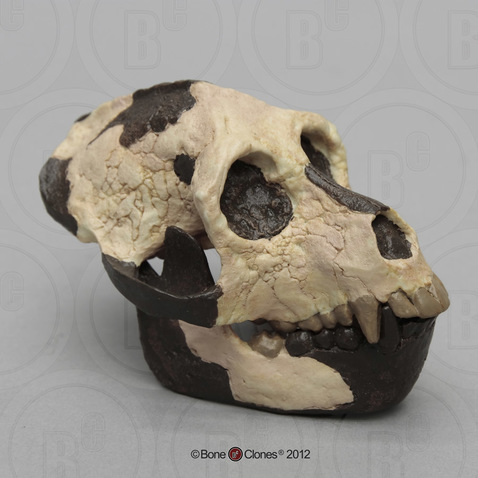-
Fields of Study
- K-12 Education
- Advanced Anatomy
- Forensics
- Physical Therapy
- Primate Locomotion
- Non-primate Locomotion
- Biological Anthropology
- Paleontology
- Bioarchaeology
- Marine-Aquarium
- Veterinary
-
Zoology
- All Zoological Items
- Endangered Species
- Skulls
- Skeletons
- Cranial Elements
- Postcranial Elements
- Eggs
- Limbs
- Teeth & Fangs
- Claws & Talons
- Brains & Endocasts
- Life Casts
- Pathology & Trauma
- Wildlife Forensics
- Sets
- Bird Sets
- Accessories
- Birds
- Mammals
- Reptiles & Amphibians
- Fish
- Sharks & Rays
- Turtles & Tortoises
- Anatomy for the Artist
- Decor
- Veterinary
- Elements
- Pathology & Trauma
-
Sets & Series
- Natural History Gift Ideas
- Decor
- Scale & Sculpture
- 3D Scanned & Printed
- Bone Boxes
- Locomotion Sets
- Forensic Sets
- Advanced Anatomy Sets
- Physical Therapy Series
- Fetal Sets
- Economy Series
- Zoology Sets
- Bird Sets
- Claw & Talon Sets
- Tooth & Fang Sets
- Primate Skull Sets
- Fossil Hominid Sets
- B.I.O.P.S.I. - Babiarz Institute
- Maxwell Collection
- Bergdorf Goodman Windows
- Accessories
- New Products
-
Our Company
- News & Specials
- Printable Handouts
- About Us
- Why Choose Bone Clones
- Bone Clones in the News
- Mission
- Contact Us
- Privacy and Security
- Frequently Asked Questions
- Testimonials
- Community Outreach
- Legal/Copyright
- Flyers
- Choosing Original Specimens
- Museum Exhibitions
- Natural History Gift Ideas
- About the Economy Series
- Acknowledgements
- Ordering & Delivery
- Warranty
- Refund/Return Policy
- Price List at a Glance
- Our Catalog
- Osteological Evaluation Reports
- About 3D Printing
- Sawyer & Maley Neanderthal Reconstruction
- Site Introduction
- Newsletter Archive
-
Human Anatomy
- All Human Anatomy
- Human Skulls
- Human Skeletons
- Head & Neck
- Postcranial Elements
- Advanced Anatomy
- Physical Therapy / Joints
- Human Brains & Endocast
- Human Life Casts
- Maxwell Museum
- Sets & Series
- Accessories
- Osteological Evaluation Reports
- Featured
- Adult Human Anatomy
- Adolescent Human Anatomy
- Child Human Anatomy
- Fetal Human Anatomy
- Fossil Hominids
-
Zoology
- All Zoological Items
- Endangered Species
- Skulls
- Skeletons
- Cranial Elements
- Postcranial Elements
- Eggs
- Limbs
- Teeth & Fangs
- Claws & Talons
- Brains & Endocasts
- Life Casts
- Pathology & Trauma
- Wildlife Forensics
- Sets
- Bird Sets
- Accessories
- Birds
- Mammals
- Reptiles & Amphibians
- Fish
- Sharks & Rays
- Turtles & Tortoises
- Paleontology
- Non-human Primates
- Forensics
All items sold on this website are replicas and are 1:1 scale unless stated otherwise. All Bone Clones® products are made in the USA. No real/natural bone is available on this site.
 ALSO SEE:
ALSO SEE:
Aegyptopithecus zeuxis Skull
BH-025 $189.00
29 MYA. The Aegyptopithecus zeuxis skull was first discovered in the Egyptian Faiyum Depression by E. Simons' team in 1966. A. zeuxis is probably the best known of the propliopithecids (believed to be an ancestor of Old World monkeys and hominoids). With its long snout and small brain case, it bears a close resemblance to adapids (modern lemurs and lorises); however, its dentition points to a relationship to Old World higher primates (monkeys and apes). It had a 2:1:2:3 dental formula and a postorbital region enclosed by bone. Aegyptopithecus, sometimes called the "Dawn Ape," is an excellent example of a transitional form and an important link between earlier primates and the apes of the Miocene Epoch. Although the initial discovery yielded few remains, today we have a variety of specimens available for study. Differences in tooth size show a marked sexual dimorphism among members of this species. Primates that exhibit a high degree of sexual dimorphism (such as baboons) often live in large social units while those that display very little difference (such as gibbons) usually live in smaller groups. Based on this information, it has been determined that Aegyptopithecus zeuxis may have lived in large, complex social units. The few postcranial remains that have been discovered indicate that this propliopithecid was a slow moving arboreal quadruped, similar to the New World howler monkey, that was capable of leaping and some suspensory behavior. Our recreation was based on CGM 40237 from the Cairo Geological Museum, as published in The Journal of Human Evolution, (March, 1987, pp. 272-289) and a composite of two individuals, AMNH 13389 and YPM 21032. The cranium is from a sub-adult male.
The Bone Clones® Fossil Hominid line is composed of discoveries from anatomically modern humans, archaic humans, early Homo, early hominins, and other hominids. The majority of the casts in this line have been recreated by our team of anatomical sculptors. Some are reconstructions made by anthropology professionals using fragmentary elements from original discoveries and extrapolating the missing parts from those (i.e. Neanderthal skeleton).
2-part skull (separate cranium & jaw).
Custom display stand available below.
Jaw available individually as well, please inquire.
| Scientific Name | Catalogue # | Size | Price |
| Aegyptopithecus zeuxis | BH-025 | 4" L x 2 ½" W x 2 ½" H 9.9L x 6.3W x 6.3H (cm) | $189.00 |
Related Products:
-
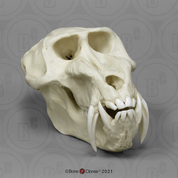 Mandrill Baboon Skull, Male
Mandrill Baboon Skull, Male -
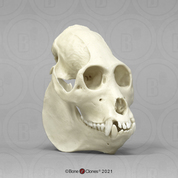 Mantled Howler Monkey Skull
Mantled Howler Monkey Skull -
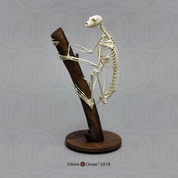 Indri Lemur Skeleton, Articulated
Indri Lemur Skeleton, Articulated -
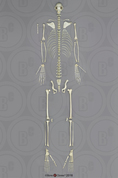 Indri Lemur Skeleton, Disarticulated
Indri Lemur Skeleton, Disarticulated -
 Ardipithecus ramidus Skull
Ardipithecus ramidus Skull -
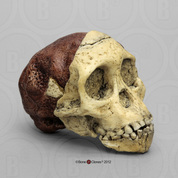 Australopithecus africanus Skull (Taung Child)
Australopithecus africanus Skull (Taung Child) -
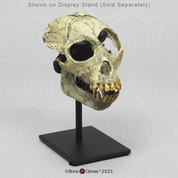 Proconsul africanus Skull
Proconsul africanus Skull -
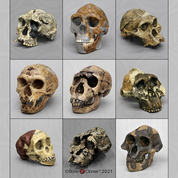 Set of 9 Fossil Hominid Skulls
Set of 9 Fossil Hominid Skulls -
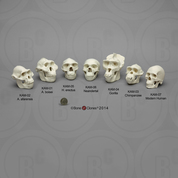 Set of 7 Primate Skulls, Half Scale
Set of 7 Primate Skulls, Half Scale -
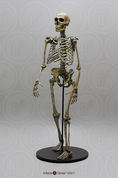 Neanderthal Skeleton, Articulated
Neanderthal Skeleton, Articulated -
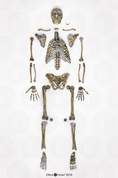 Neanderthal Skeleton, Disarticulated
Neanderthal Skeleton, Disarticulated -
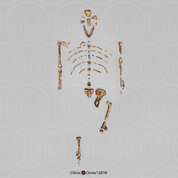 "Lucy" Skeleton, Disarticulated
"Lucy" Skeleton, Disarticulated -
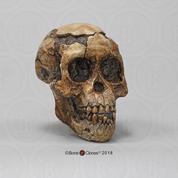 Australopithecus afarensis Skull "Selam"
Australopithecus afarensis Skull "Selam" -
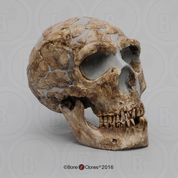 Homo neanderthalensis Skull Shanidar 1
Homo neanderthalensis Skull Shanidar 1 -
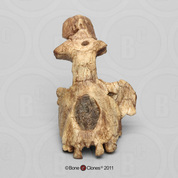 Saadanius hijazensis Cranium SGS-UM 2009-002
Saadanius hijazensis Cranium SGS-UM 2009-002
Newsletter Signup
9200 Eton Ave.
Chatsworth, CA 91311 USA
© 1992-2025 Bone Clones Holdings. All Rights Reserved.
Customer Service
© 2025 BONE CLONES HOLDINGS / Made by MEV




